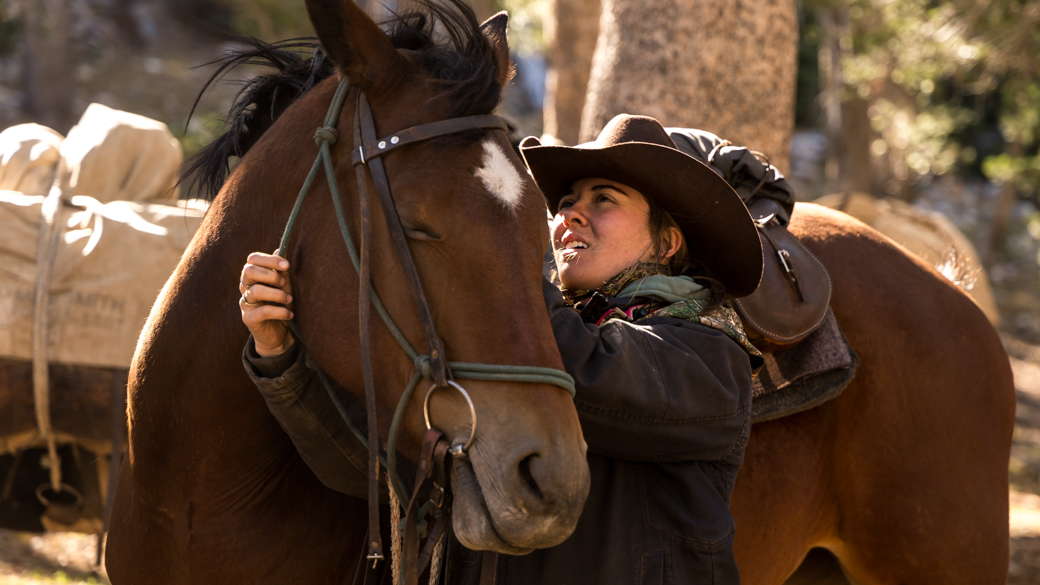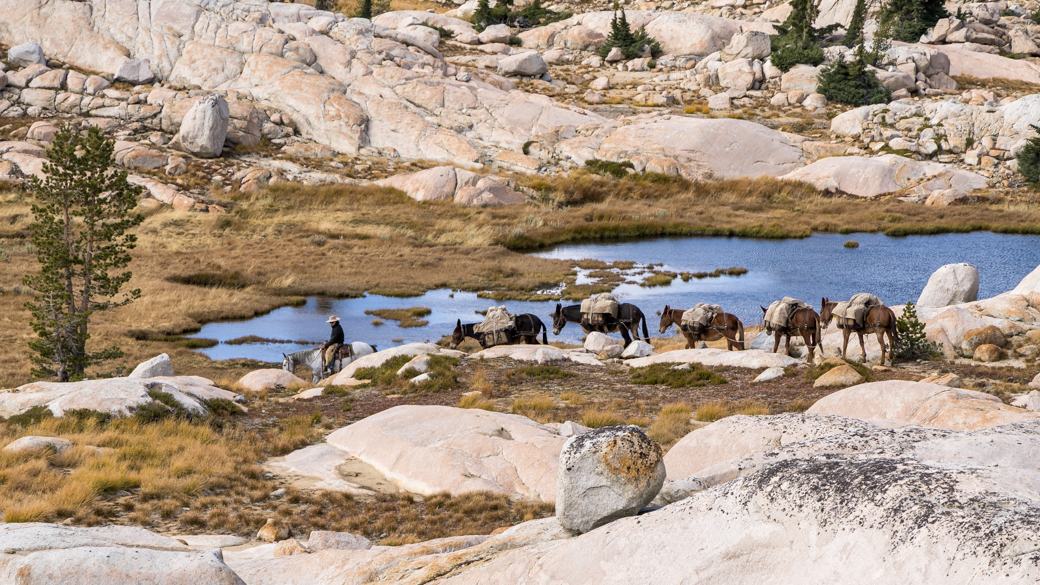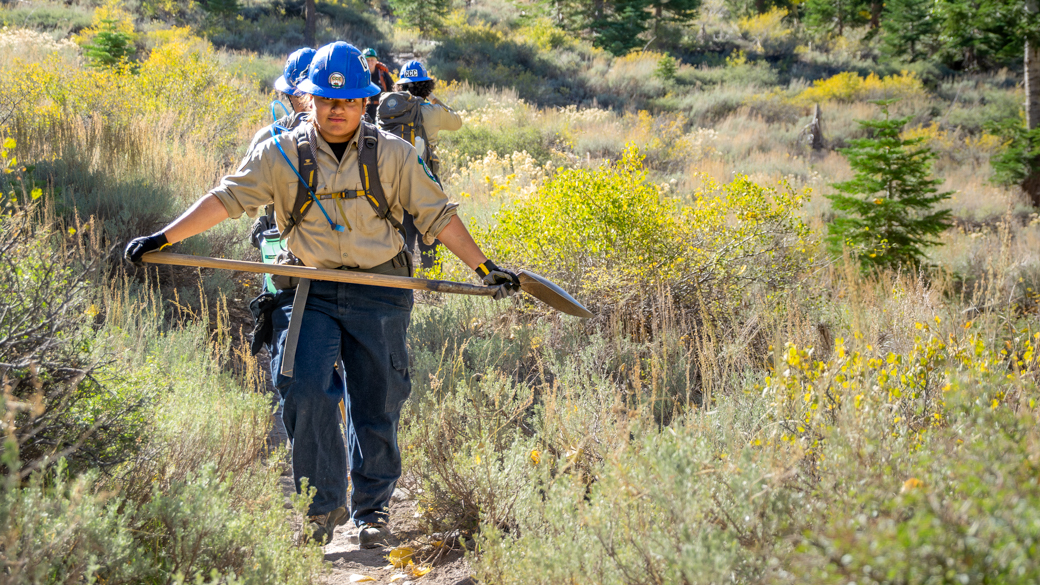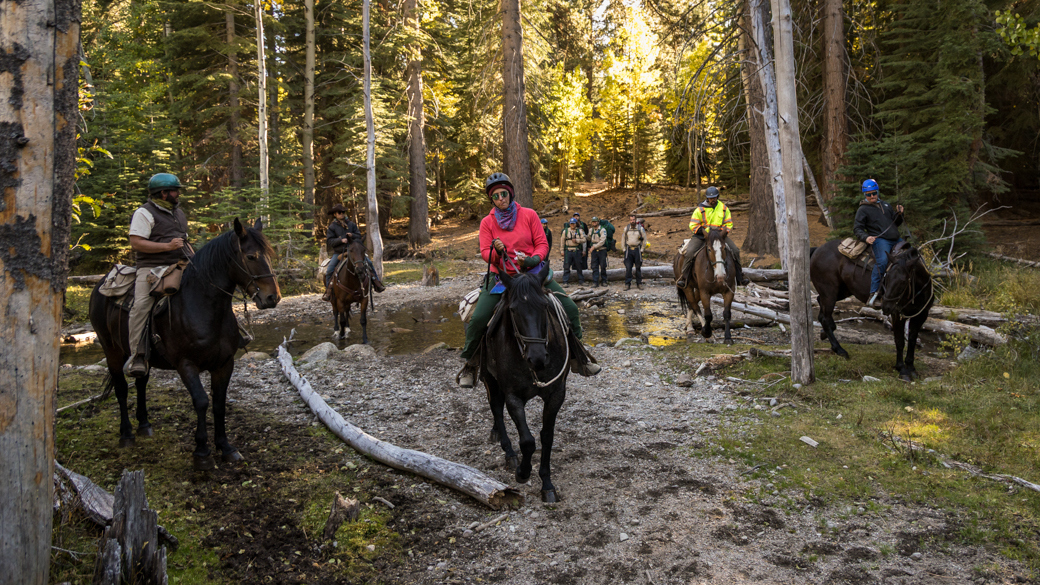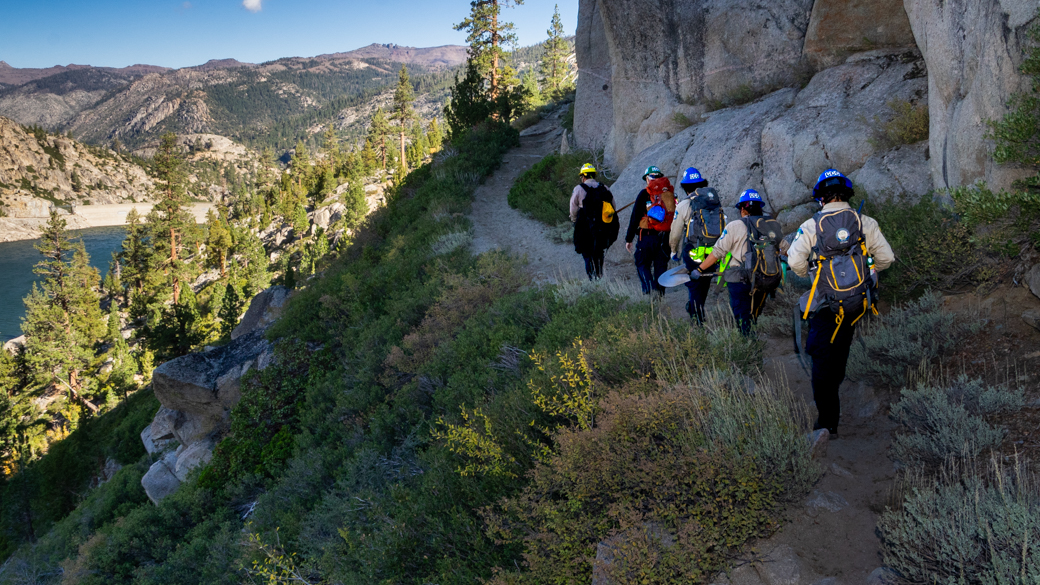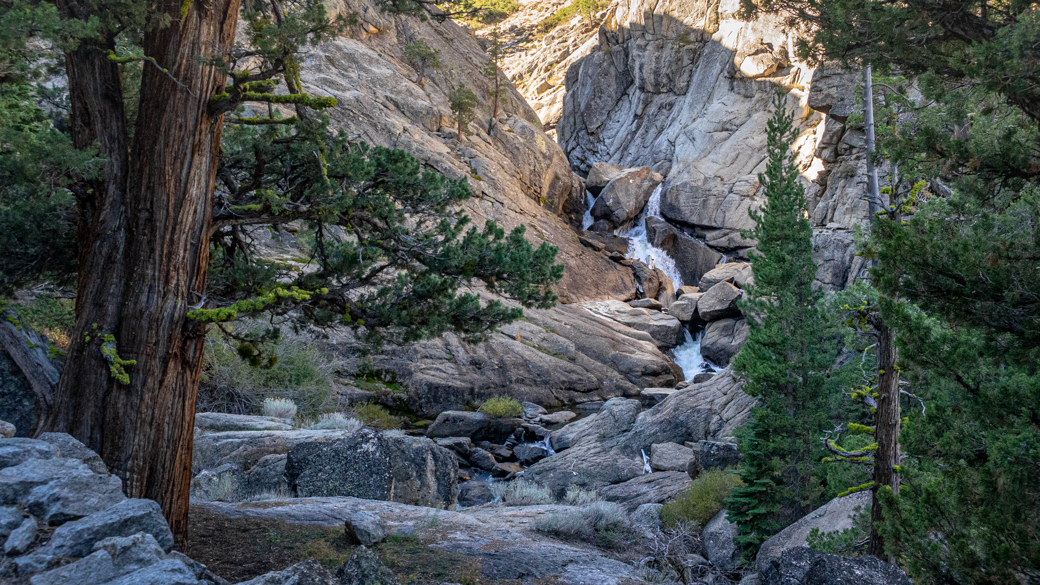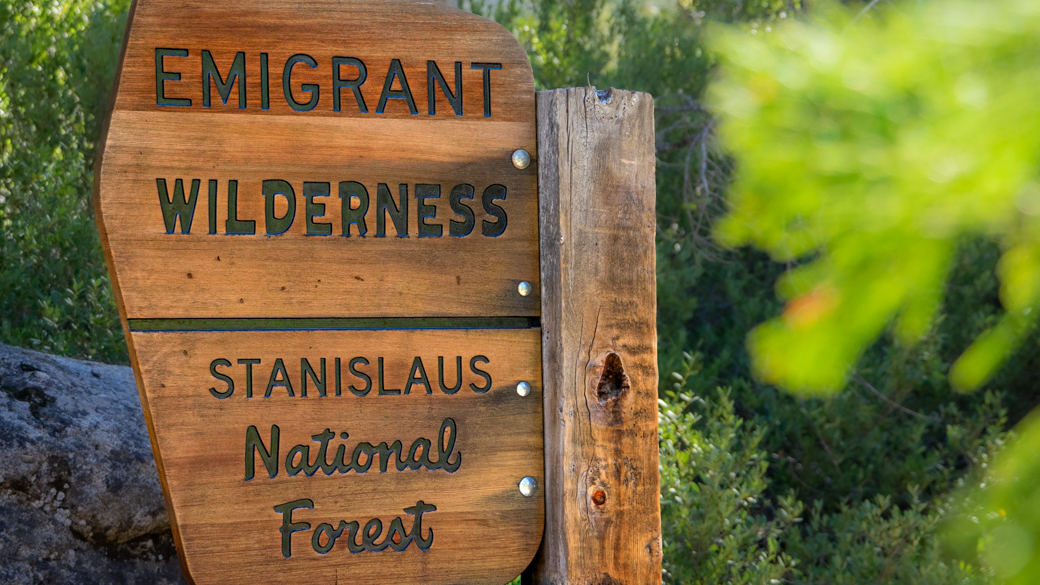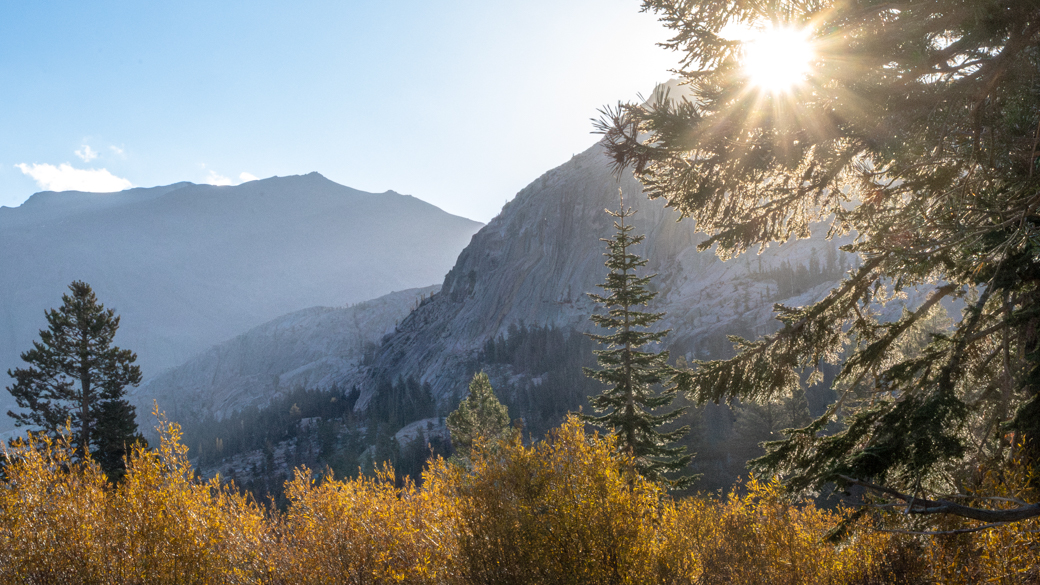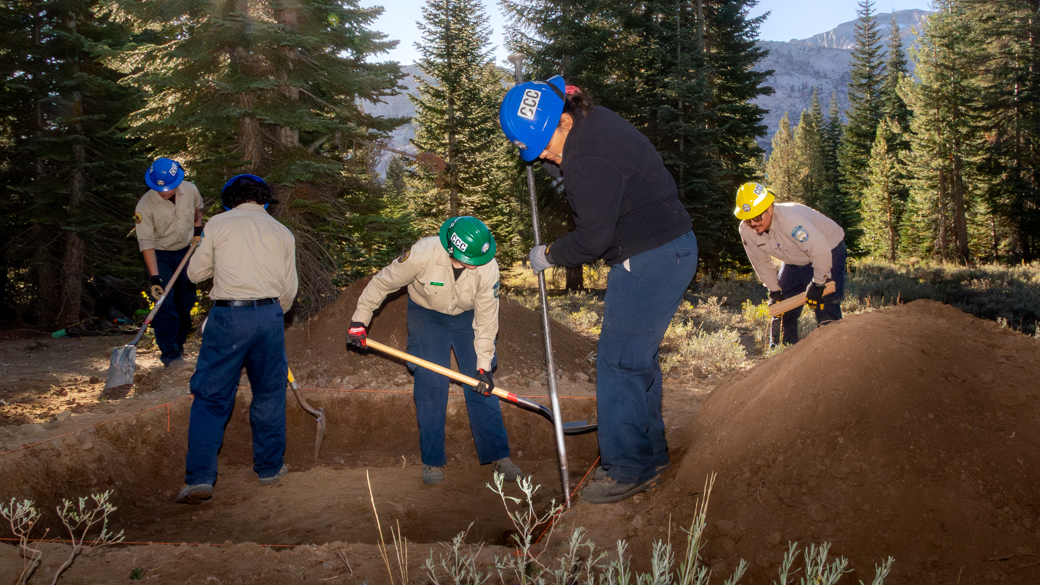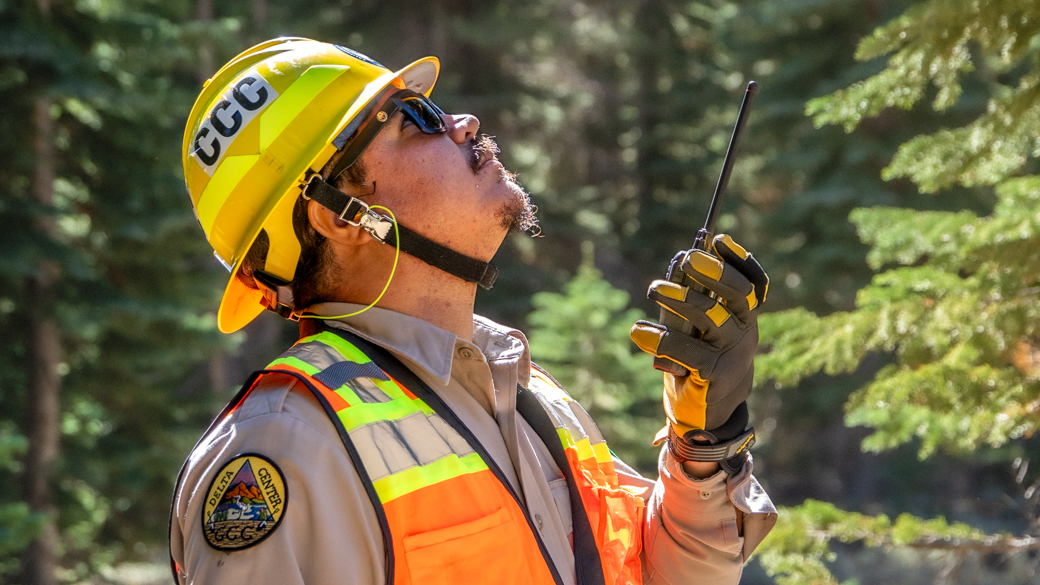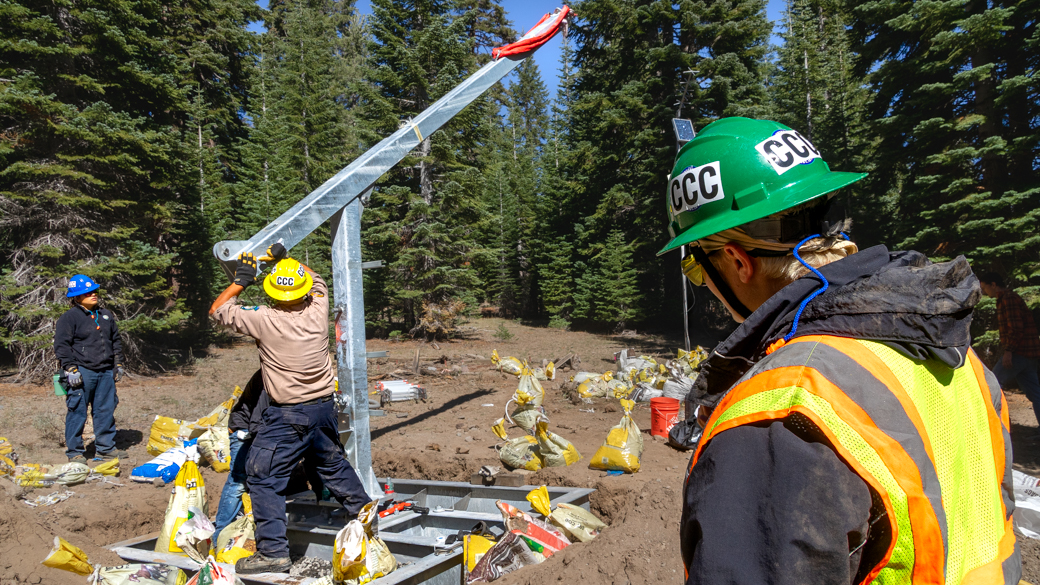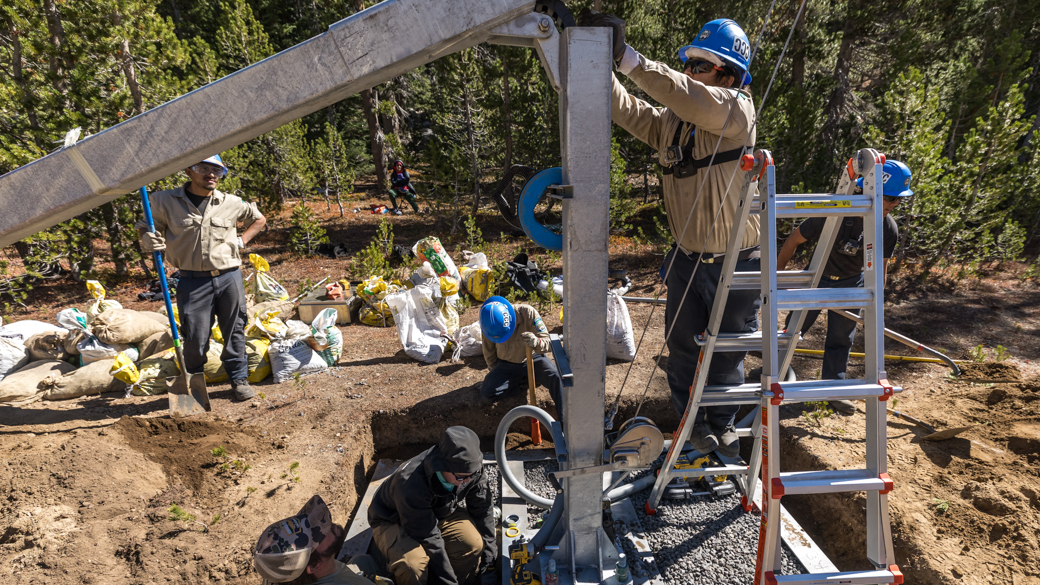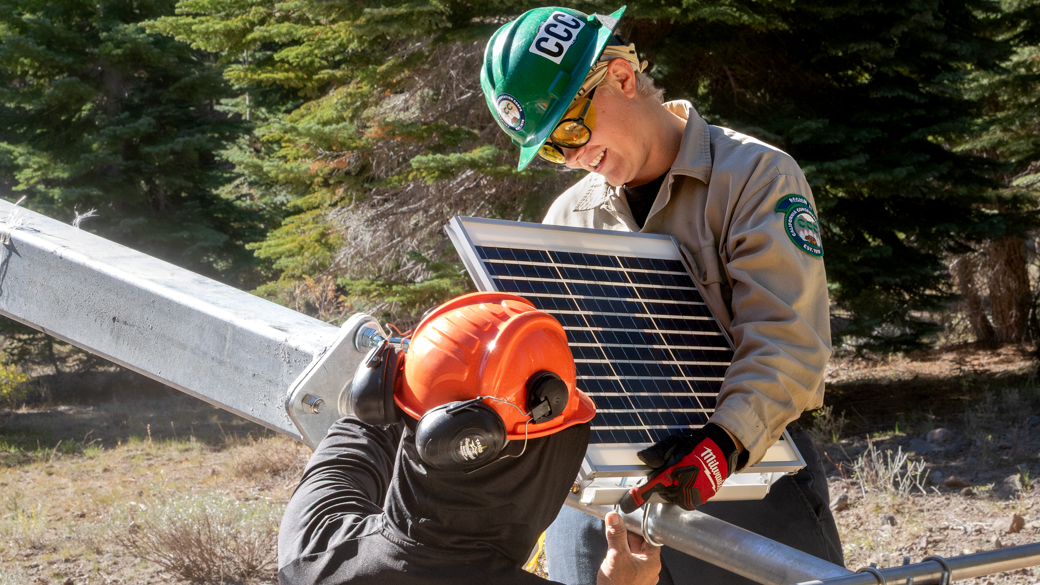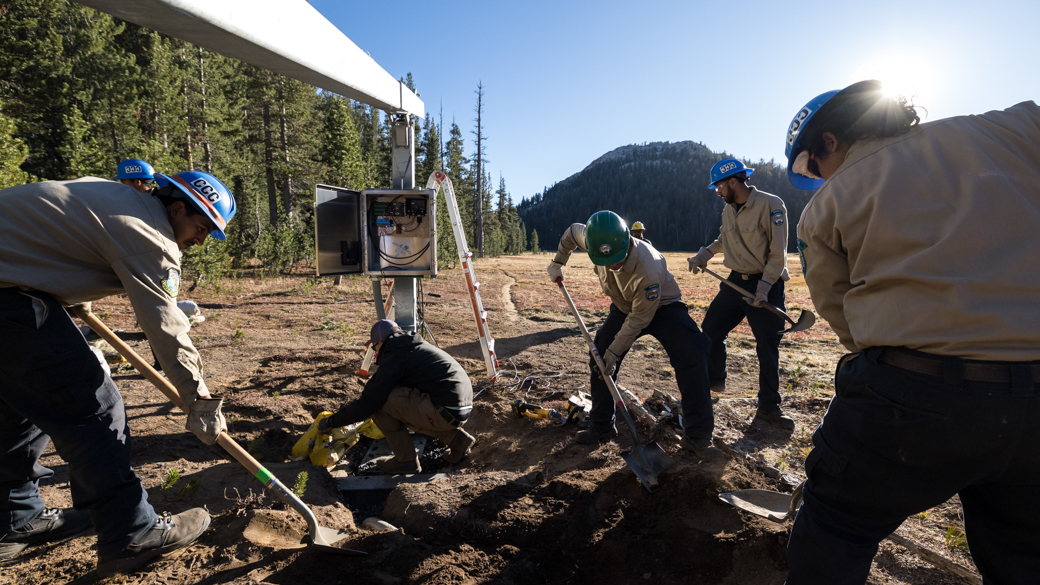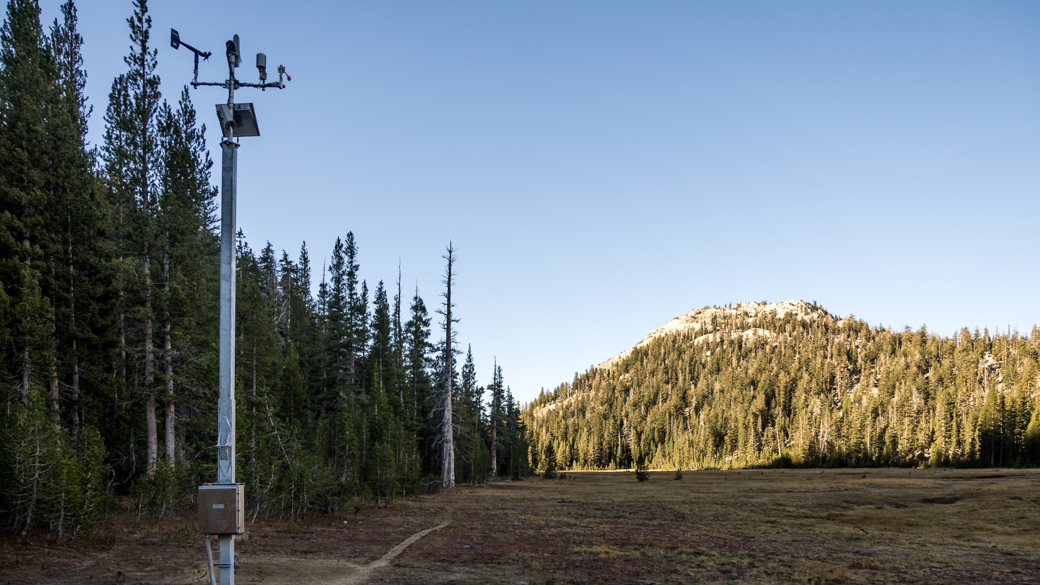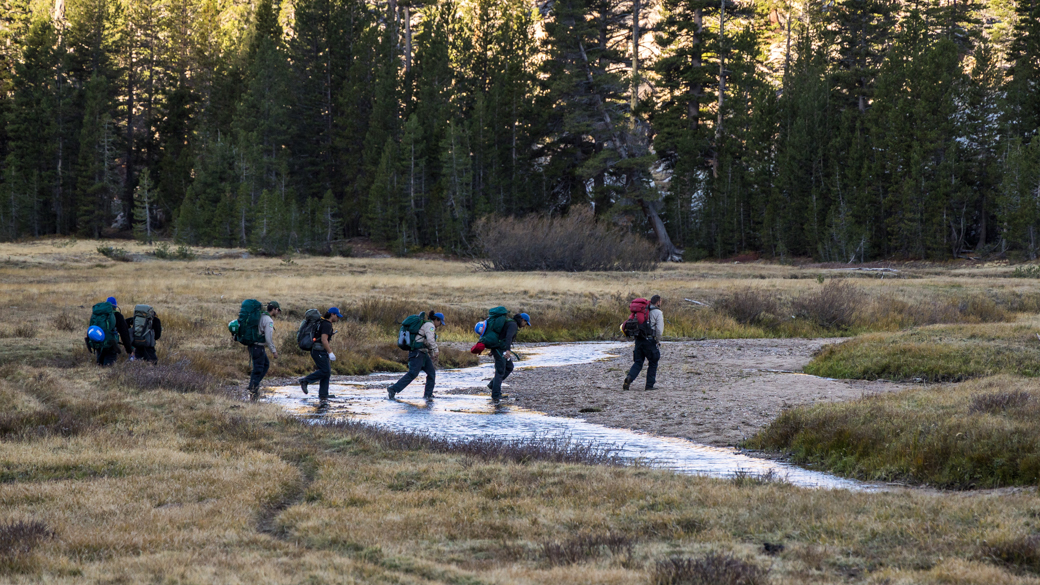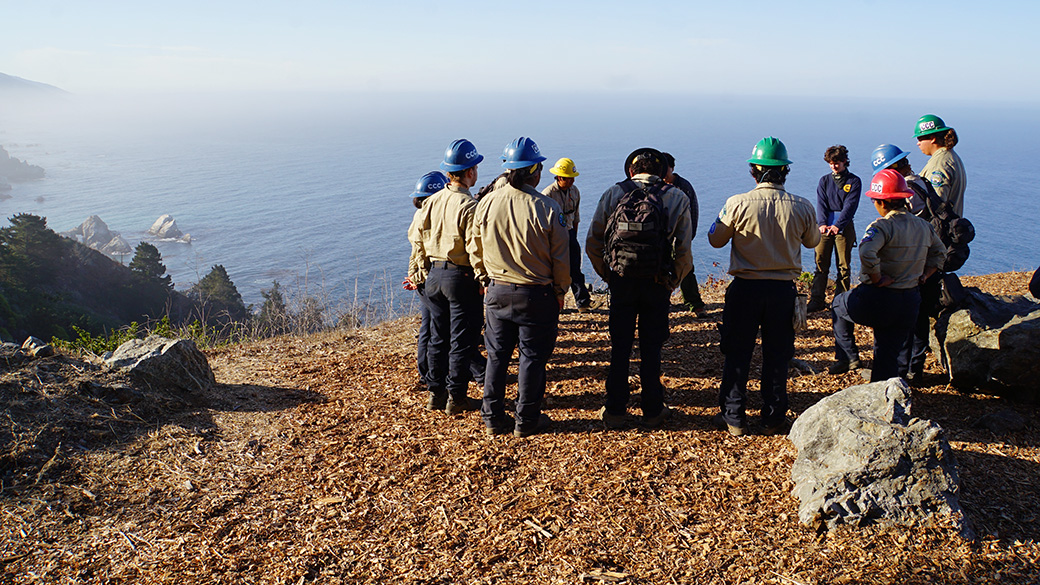“I’m really glad I said yes to this… it just opens up your entire horizon to new things.”
Levai Jimenez
CCC Delta Center
Two California Conservation Corps crews recently teamed up with the Department of Water Resources (DWR) to install high-tech weather stations in the remote Sierra Nevada Mountains. It was an action-packed adventure, requiring the help of cowboys, consultants, choppers, and Corpsmembers.
“I’ve never done something as grand as this,” said Delta Corpsmember Levai Jimenez. “It’s definitely a big jump for me.”
The mission began at Kennedy Meadows in the Stanislaus National Forest. Just before dawn, professional packers – dressed to the nines in cowboy hats and boots – loaded mules up with project gear and supplies. A scene straight out of a classic western movie. As morning sunlight crested the mountains, the team started hoofing it up the trail. Meanwhile, Corpsmembers from the CCC Delta and Fresno centers set off on foot, hiking seven and eighteen miles into the wilderness respectively. For some on the crews, this marked their first-ever backcountry trek.
“I’ve never had to pack all of my gear with me, so that was new. I was a little worried how the weight would sit and my body would handle it,” said Delta Corpsmember Jessica McAllister. “But once I got into a rhythm, it became a lot more natural. I was just hiking, and it wasn’t too bad.”
After navigating miles of steep, rocky, terrain the young adults reached their project sites and initiated phase two of the special mission: digging nine-by-nine pits to house the base of the weather stations. Using shovels and levels, Corpsmembers worked hand-in-hand with GEI environmental consultants to make sure everything was up to specification. Next, it was time to call in the helicopter. A Black Hawk approached overhead to drop off the heavy weather stations.
“I didn’t expect it to produce as much wind as it did,” said Levai. “It was really cool. I’ve never seen one of those before up close and personal.”
Together, the teams made quick work of securing the ballast and installing sensors on the tower. The two new stations will collect data on rainfall, temperature, wind speed, and snowpack. They’re designed to transmit information every hour, helping scientists understand trends in the weather and prepare for future changes.
“It’s cool because it gives us more information, more accurate readings,” said Jessica. “It helps DWR understand snowpack – which relates to flooding, reservoirs, and how much water supply people have. It helps us prepare for and prevent disasters.”
For Corpsmembers, this experience was equal parts memorable and meaningful. Installing the remote weather stations was a unique way to connect with the elements. This project bolsters the DWR’s network of weather stations, helping scientists better track and respond to climate impacts here in California.

